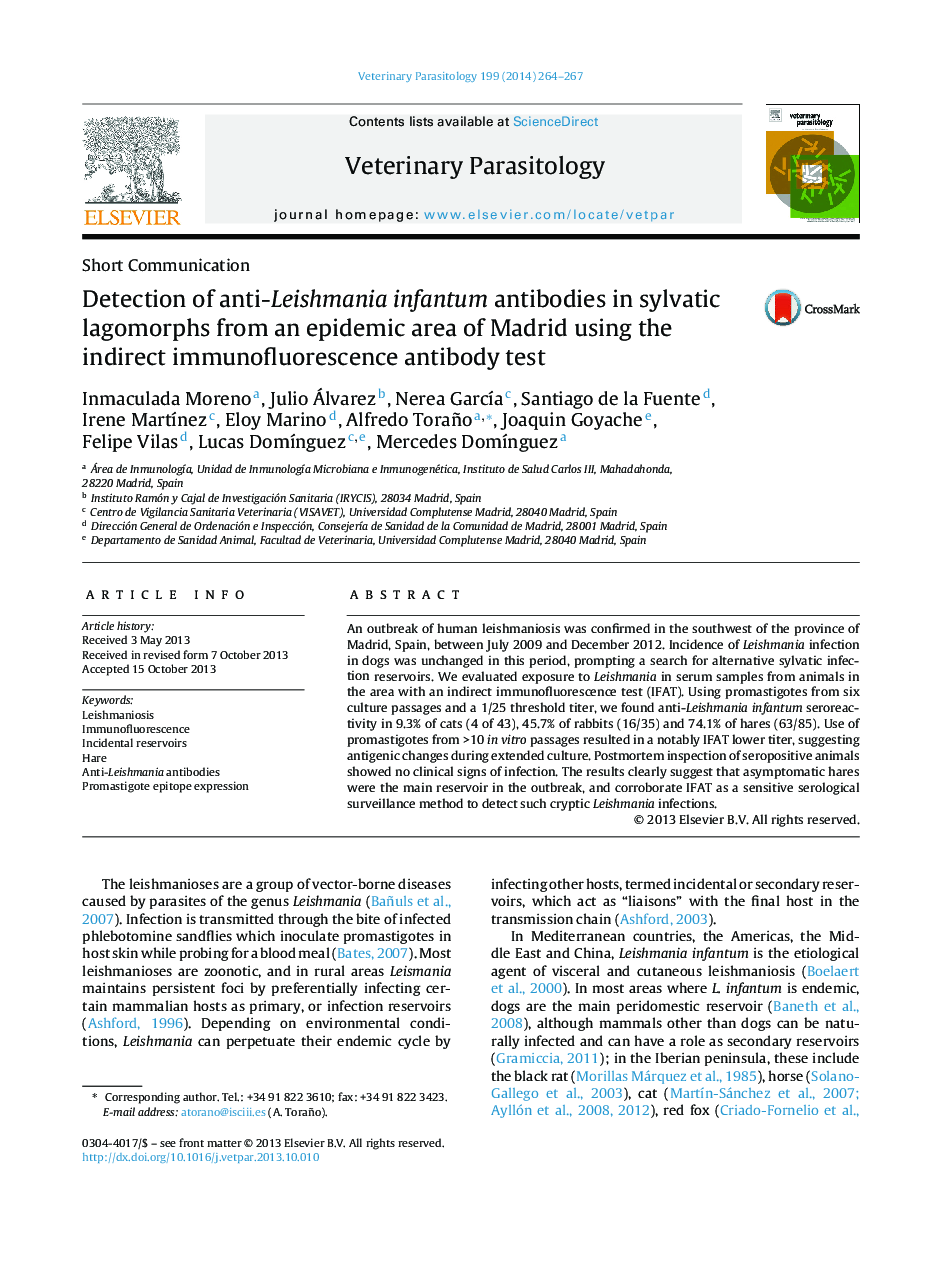| Article ID | Journal | Published Year | Pages | File Type |
|---|---|---|---|---|
| 5803861 | Veterinary Parasitology | 2014 | 4 Pages |
An outbreak of human leishmaniosis was confirmed in the southwest of the province of Madrid, Spain, between July 2009 and December 2012. Incidence of Leishmania infection in dogs was unchanged in this period, prompting a search for alternative sylvatic infection reservoirs. We evaluated exposure to Leishmania in serum samples from animals in the area with an indirect immunofluorescence test (IFAT). Using promastigotes from six culture passages and a 1/25 threshold titer, we found anti-Leishmania infantum seroreactivity in 9.3% of cats (4 of 43), 45.7% of rabbits (16/35) and 74.1% of hares (63/85). Use of promastigotes from >10 in vitro passages resulted in a notably IFAT lower titer, suggesting antigenic changes during extended culture. Postmortem inspection of seropositive animals showed no clinical signs of infection. The results clearly suggest that asymptomatic hares were the main reservoir in the outbreak, and corroborate IFAT as a sensitive serological surveillance method to detect such cryptic Leishmania infections.
